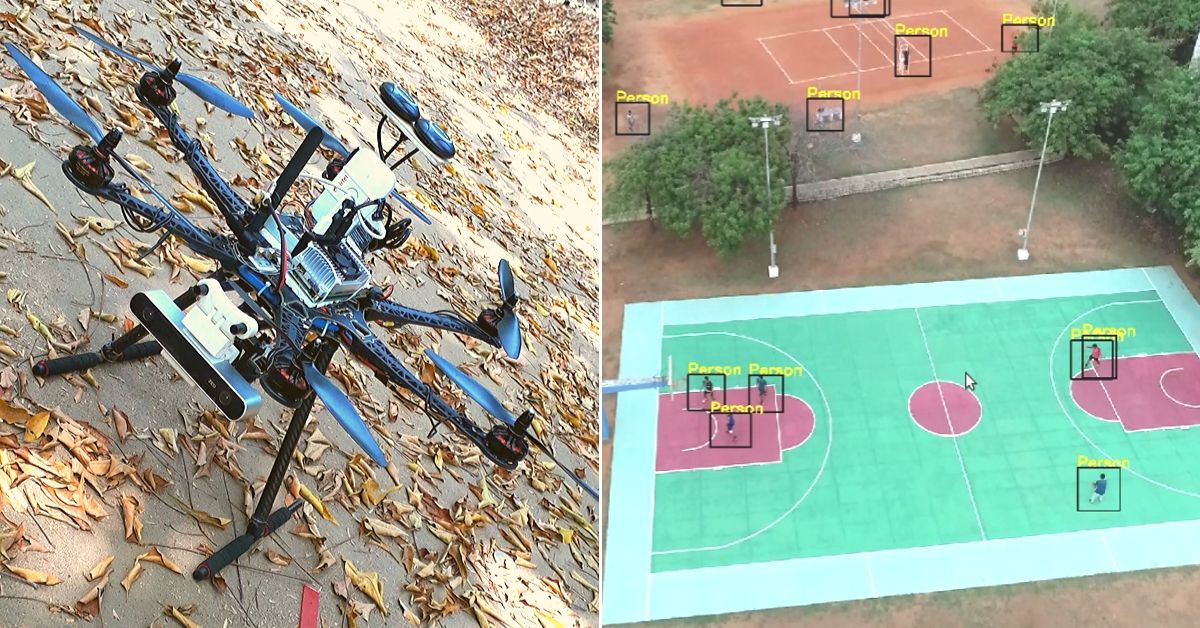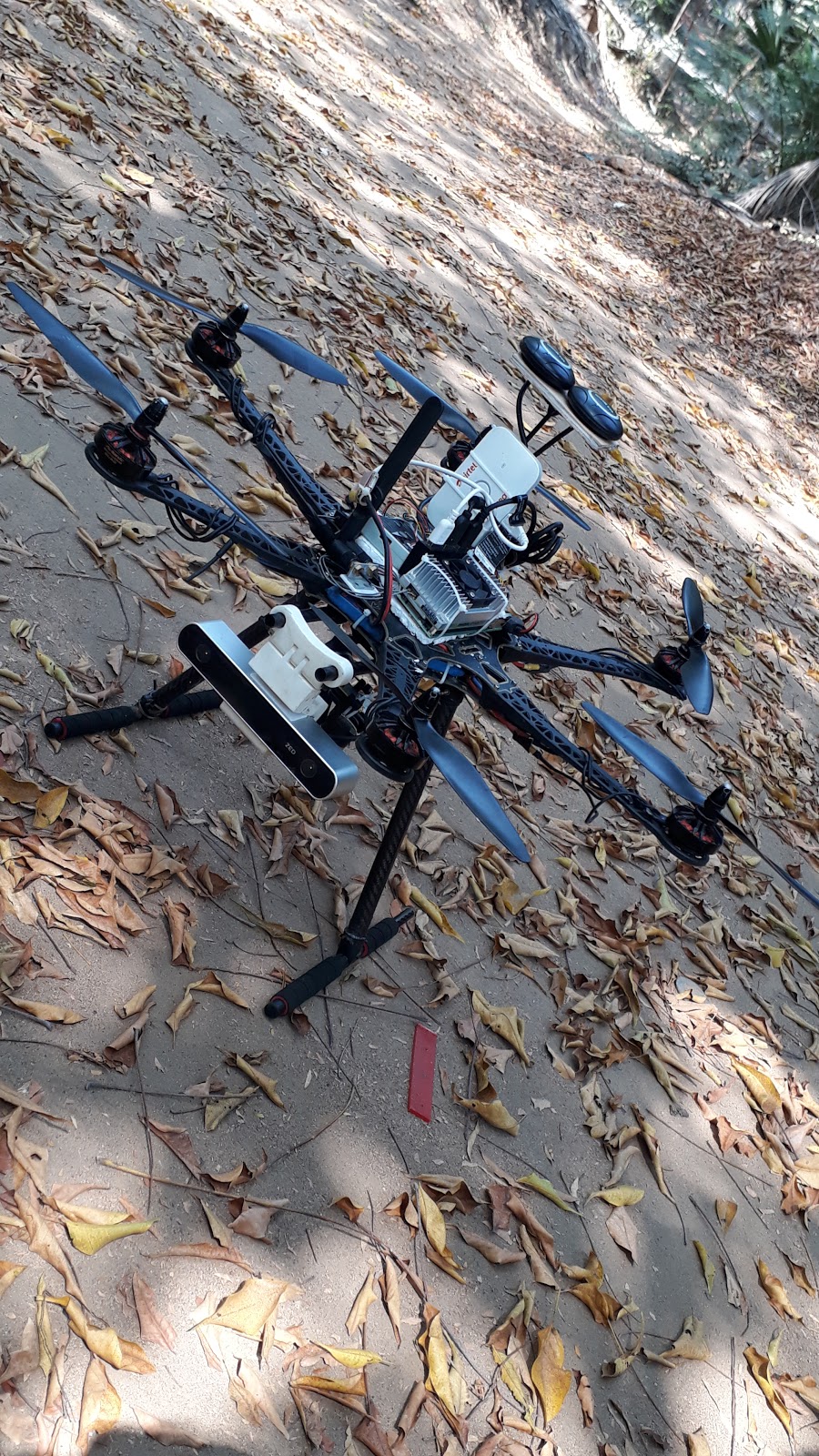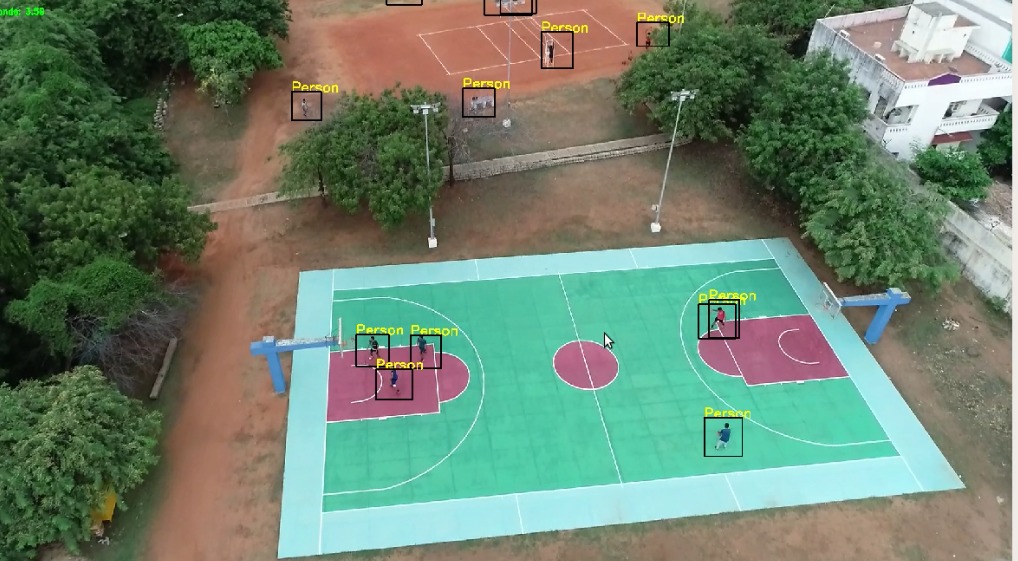IIT-Madras’s ‘Eye in the Sky’ Can Transform How India Tackles Disasters!
"Thanks to our innovation, response teams will know where to look without wasting anyone's time - helping provide food, drinking water, medicines and other safety aids to marooned populations." #IIT #Innovation

Whenever a natural disaster strikes, the first thing that goes out are the communication lines as most of them are overground. During these critical time, there is little to no transmission of data even though its the most necessary.
‘Eye in the Sky’ Disaster Management and Humanitarian Aid Services developed by a team of IIT-Madras students can potentially become the eyes of disaster management teams during communication failure.
The innovation was announced last week by the IIT-M. The technology utilises drones enabled with artificial intelligence, offering an end-to-end solution in identifying accurate information on people trapped in disaster-hit areas.
“Currently, every disaster response force has to manually go out with their vehicles, scan the entire city, and get information about people’s whereabouts and the extent of the destruction. With our innovation, all this data can be collected without any time-lapse. This could potentially save lives,” says Ayush Maniar, a third year electrical engineering student working on the UAVs For Disaster Management project under the Centre For Innovation at IIT Madras, to The Better India.
Quick decisions and responses are the need of the hour during disaster situations and this technology aims to equip response teams with the knowledge of where to look without wasting anyone’s time, help provide food, drinking water, medical and other safety aids to marooned populations.
Recognising the potential of the technology in surveillance operations, ‘Eye in the Sky’ received the ‘Microsoft AI For Earth’ grant and won the Indian Innovation Growth Programme University Challenge held at IIT-Bombay recently.
“We are mainly working on the software side. Our focus is not on drone hardware. There are companies in India already building customisable drones. However, there aren’t many companies that can provide accurate analysis-based solutions based on video footage. Our software can help detect people from a height of 30-40 meters above ground, figuring out whether people are unconscious, require help, etc,” he says.
It was during his first year of college when Ayush began reading online about the benefits of AI. The idea for ‘Eye in the Sky’ really took off when he came across computer vision, a sub-field of AI, which seeks to make machines intelligent enough to understand images and videos.
What makes ‘Eye in the Sky’ unique is that its analytical modules are based on the latest available technology with the team creating their own databases for some of the modules.
“The Eye in the Sky is an innovation based on futuristic disruptive technologies. It will be a powerful tool for saving lives and providing succor during disaster relief and humanitarian aid operations,” says Lt. Gen. (retd) P.R. Shankar, Faculty Advisor of the (Student) Team, and Professor of Practice, Department of Aerospace Engineering, IIT Madras.

“With further marginal development, it can be extensively used in surveillance operations. The innovation is platform agnostic and has immense value. It is not without reason that Microsoft and Lockheed Martin have recognised this effort. The innovation team is working with NDMA and Armed Forces to develop and deploy indigenous technologies for Indian solutions to Indian problems. I sincerely wish this team all success,” he added.
The role of local relief task forces and NGOs remains crucial in all phases of disaster management. The ‘Eye in the Sky’ can help them in documenting the findings of the assessments, and provide the information to the disaster administration to overcome vulnerabilities and address risks, states the press release.
Also Read: IIT-Madras@60: 3 Generations of Students Share How It Changed Their Lives Forever
Following a series of experiments, the team is developing four major capabilities, which according to release include:
1. Deep Learning for Highly Accurate Person Detection
a. Person Detection from High Altitude – Detects people from very high altitudes and takes count of number of people seen and marks density of people on map and sends to authorities
b. Low Altitude Person Detection – Detects people from low altitudes and takes count of number of people seen and marks density of people on map and reports it to authorities
c. Consciousness Detection – Detecting whether a person is able to move or not. And signalling the rescuers around him if no motion (probability of him being unconscious) is detected.
d. Occluded Person Detection – Detection of people buried under the debris where only a part of the body is visible to the outside world. (Not the entire body)
2. Autonomous Mission Execution by Drone
3. Swarm Intelligence for Maximal Area Coverage in Minimum Time
4. Made highly optimised path planning algorithms for a swarm of drones which can enable to cover maximum area in minimum time, besides ensuring information is passed in a timely manner to the concerned authorities.
While the team has gone past the proof-of-concept and prototype stage, they are still a fair deal away from making this software implementable and feasible.
As Ayush says, “We need to figure out some implementation-level nitty-gritties.”
Once they do develop a workable product, it can revolutionise how India deals with natural disasters.
(Edited by Saiqua Sultan)
Like this story? Or have something to share? Write to us: [email protected], or connect with us on Facebook and Twitter.
This story made me
- 97
- 121
- 89
- 167
Tell Us More
We bring stories straight from the heart of India, to inspire millions and create a wave of impact. Our positive movement is growing bigger everyday, and we would love for you to join it.
Please contribute whatever you can, every little penny helps our team in bringing you more stories that support dreams and spread hope.



















